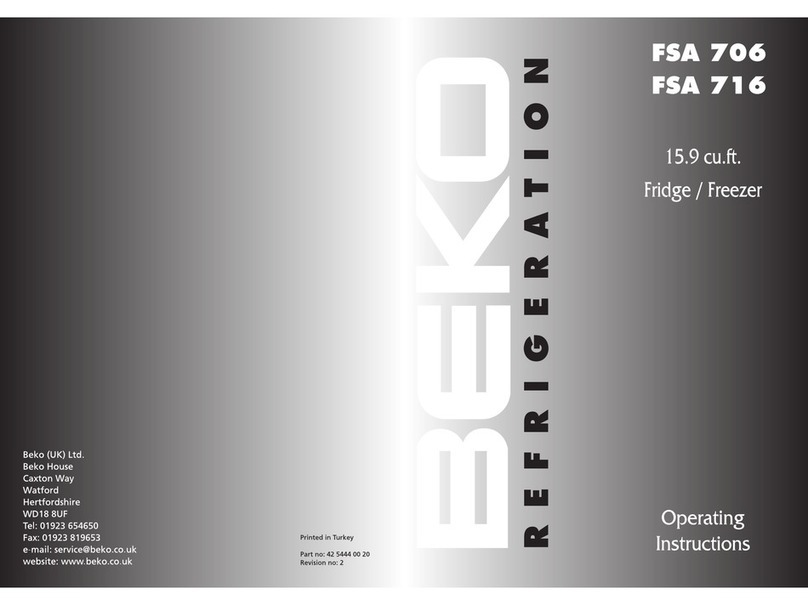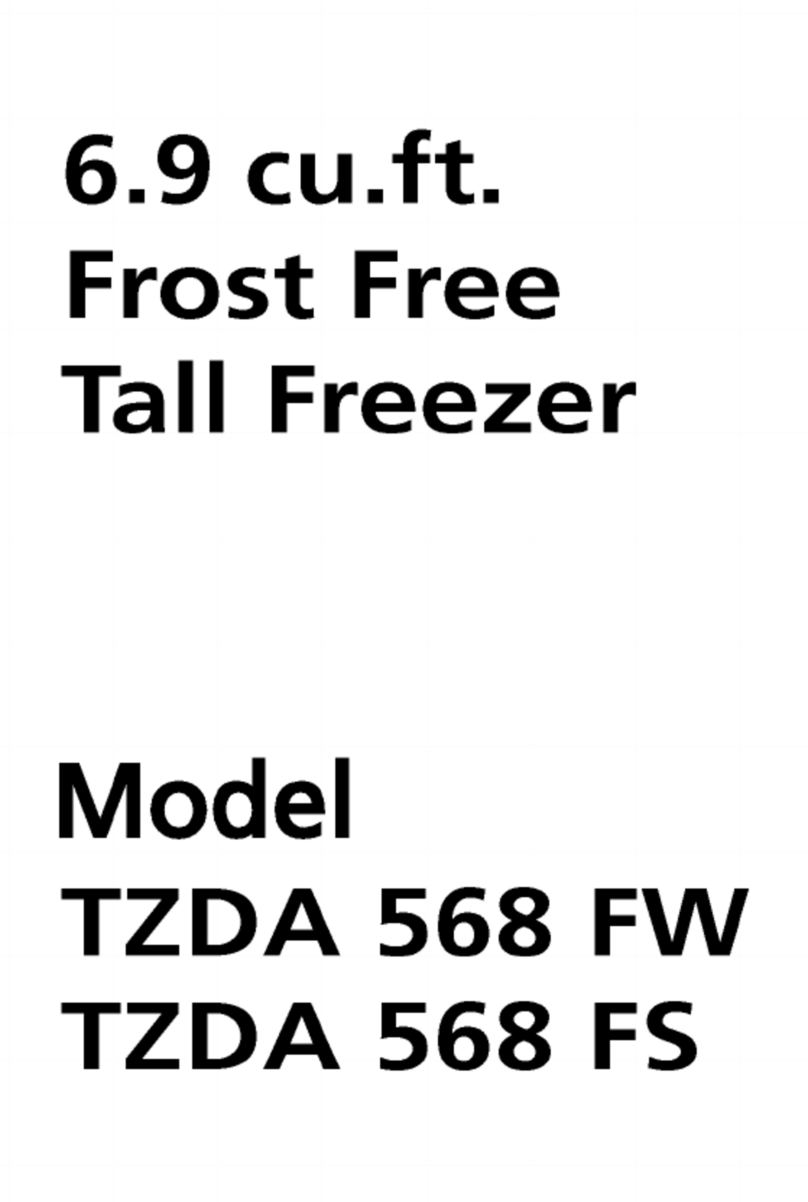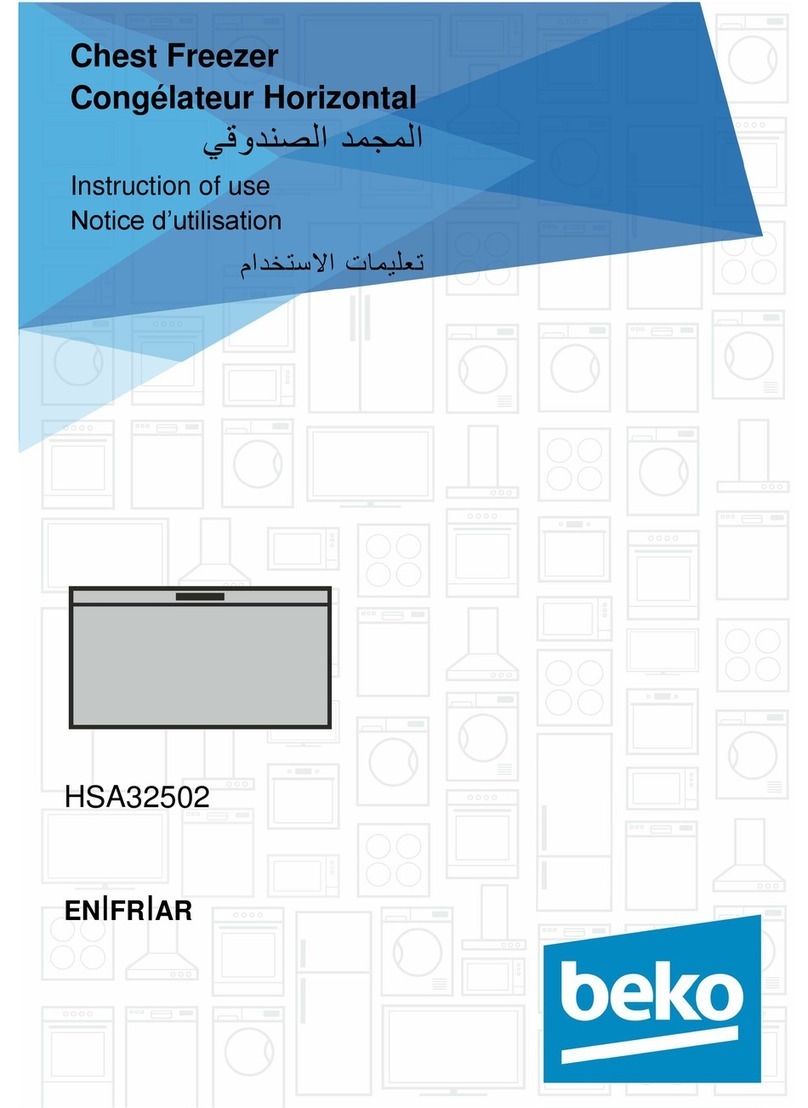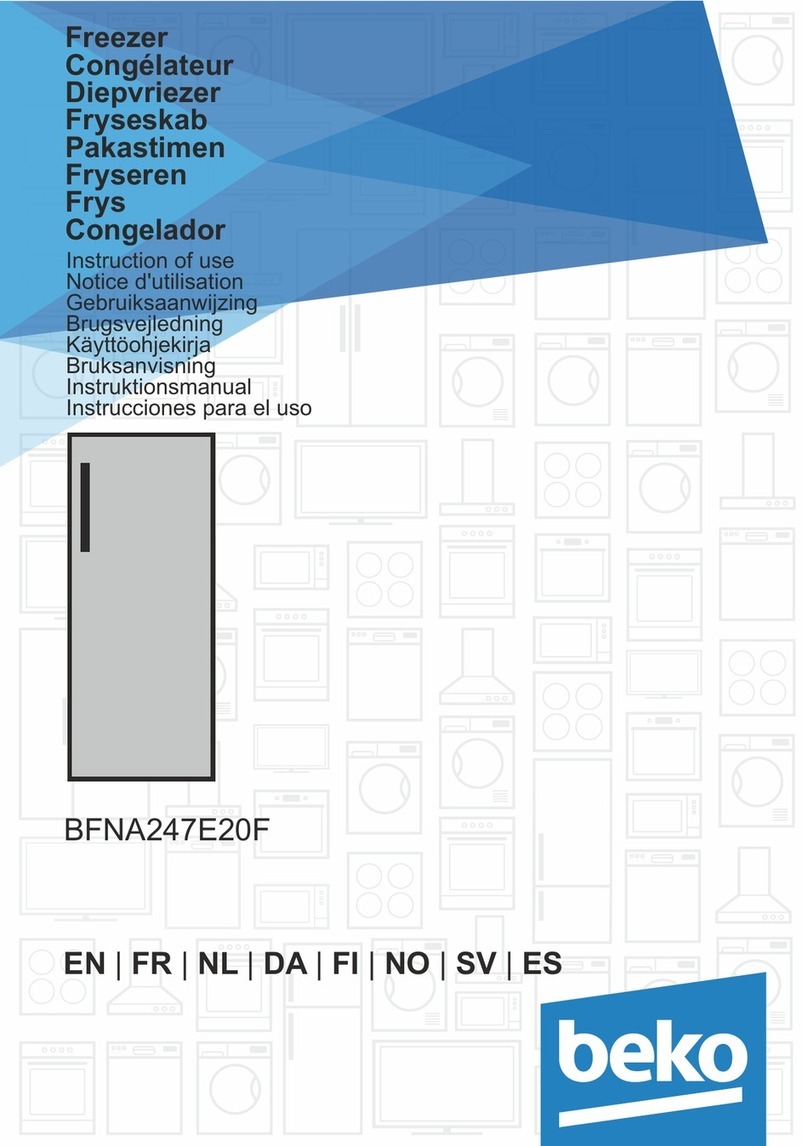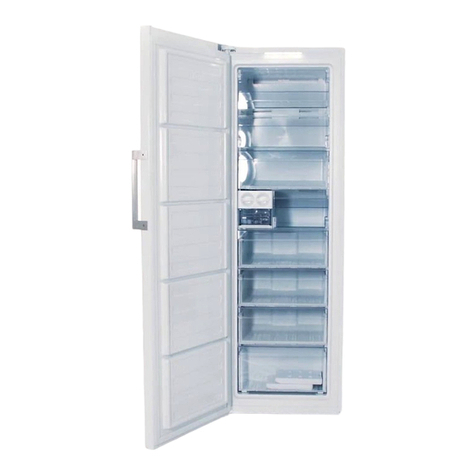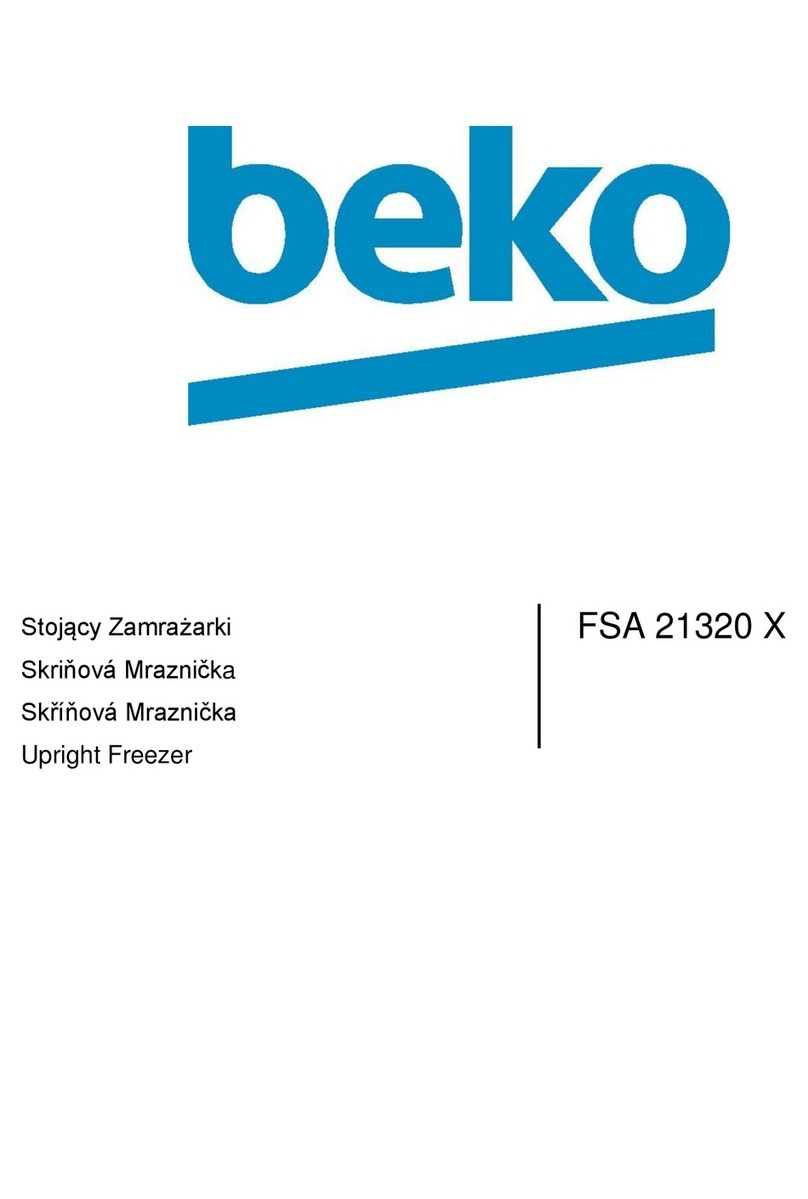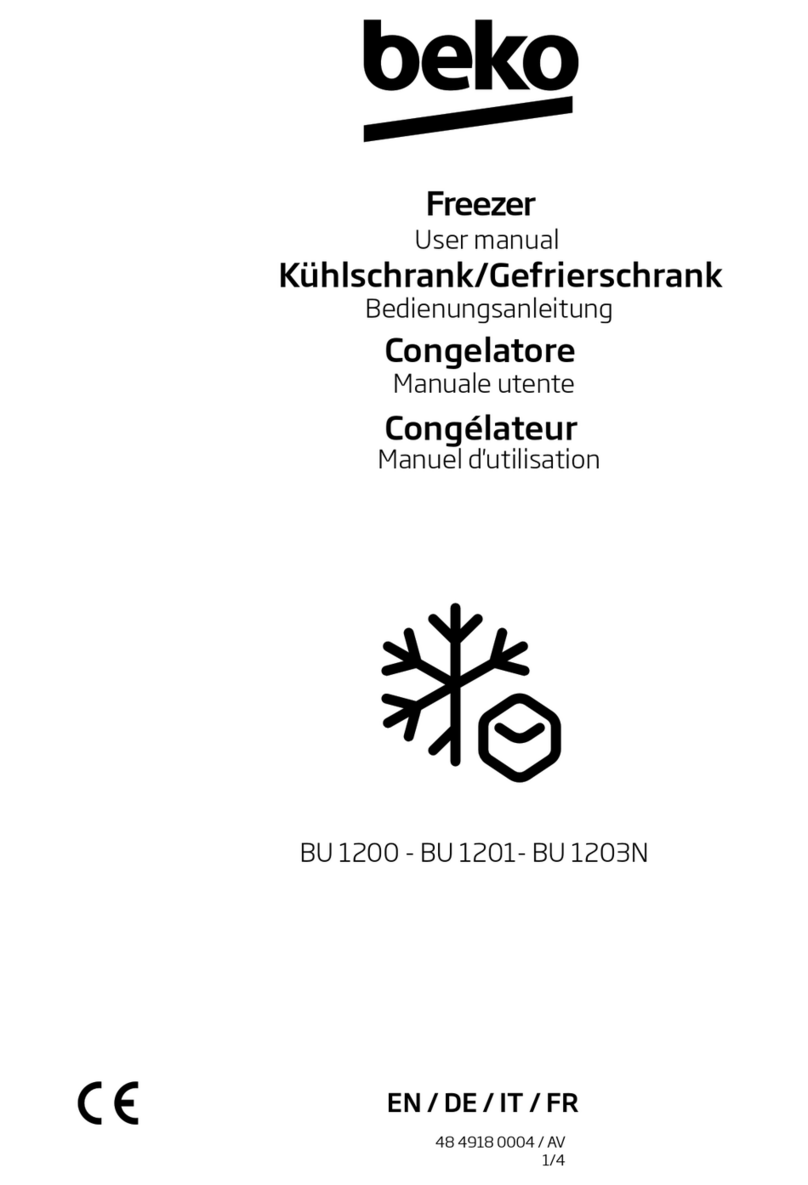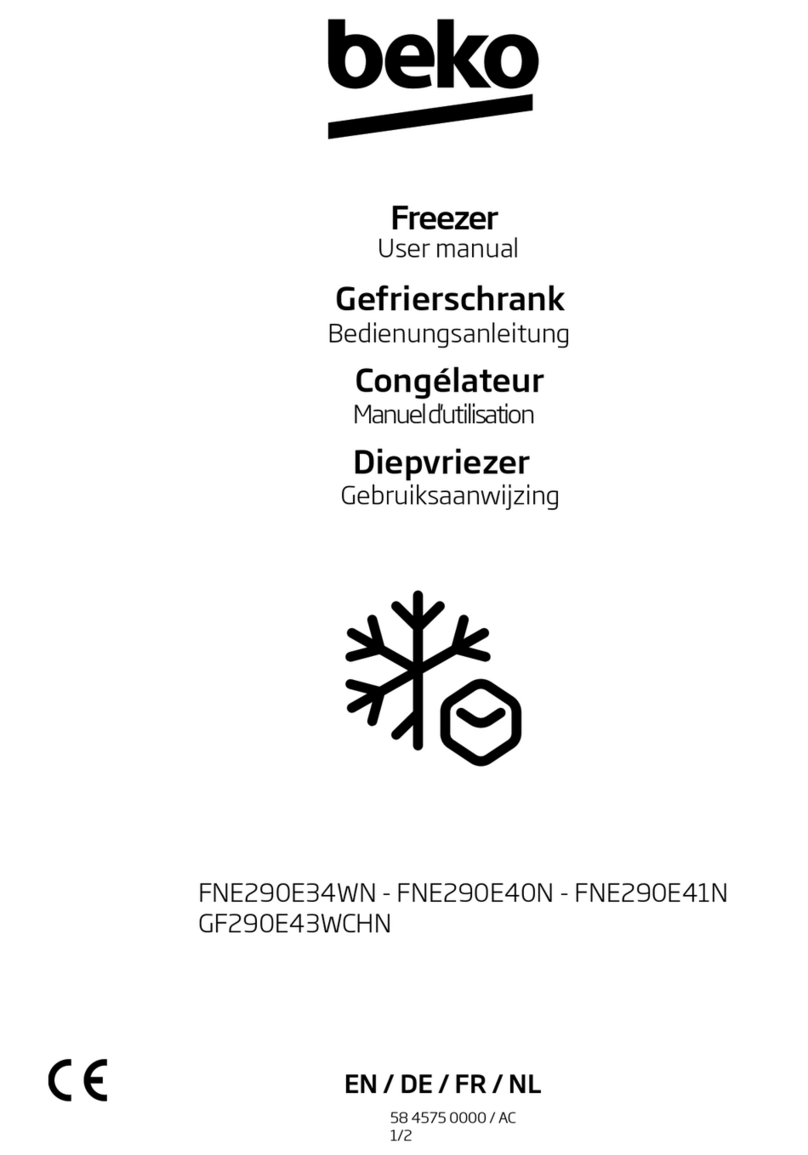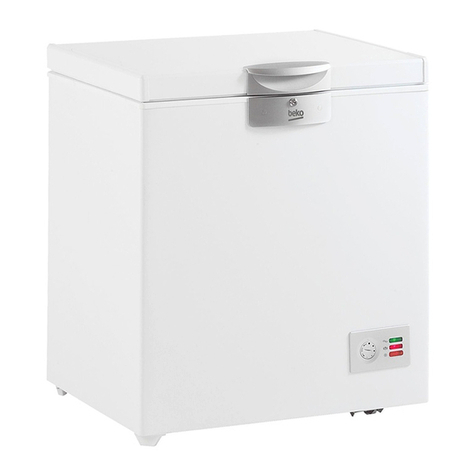
6 / 23 EN Refrigerator/User Manual
Safety and environment instructions
1.1.1 HC warning
If the product comprises a cooling
system using R600a gas, take
care to avoid damaging the
cooling system and its pipe while
using and moving the product.
This gas is flammable. If the
cooling system is damaged, keep
the product away from sources
of fire and ventilate the room
immediately.
C
The label on the inner
left side indicates the
type of gas used in the
product.
1.1.2 For models with
water dispenser
Pressure for cold water inlet
shall be maximum 90 psi(6.2
bar). If your water pressure
exceeds 80 psi(5.5 bar), use a
pressure limiting valve in your
mains system. If you do not
know how to check your water
pressure, ask for the help of a
professional plumber.
If there is risk of water
hammer effect in your
installation, always use a
water hammer prevention
equipment in your installation.
Consult Professional plumbers
if you are not sure that there
is no water hammer effect in
your installation.
Do not install on the hot water
inlet. Take precautions against
of the risk of freezing of the
hoses. Water temperature
operating interval shall be
33°F (0.6°C) minimum and
100°F (38°C) maximum.
Use drinking water only.
1.2.Intended use
This product is designed for
home use. It is not intended
for commercial use.
The product should be used to
store food and beverages only.
Do not keep sensitive
products requiring controlled
temperatures (vaccines,
heat sensitive medication,
medical supplies, etc.) in the
refrigerator.
The manufacturer assumes no
responsibility for any damage
due to misuse or mishandling.
Original spare parts will
be provided for 10 years,
following the product
purchasing date.
1.3.Child safety
Keep packaging materials out
of children’s reach.
Do not allow the children to
play with the product.
If the product’s door comprises
a lock, keep the key out of
children’s reach.
1.4. Compliance with WEEE
Directive and Disposing
of the Waste Product
This product complies with
EU WEEE Directive (2012/19/EU).
This product bears a classification
symbol for waste electrical and
electronic equipment (WEEE).
This product has been
manufactured with high
quality parts and
materials which can be
reused and are suitable
for recycling. Do not
dispose of the waste
product with normal domestic
